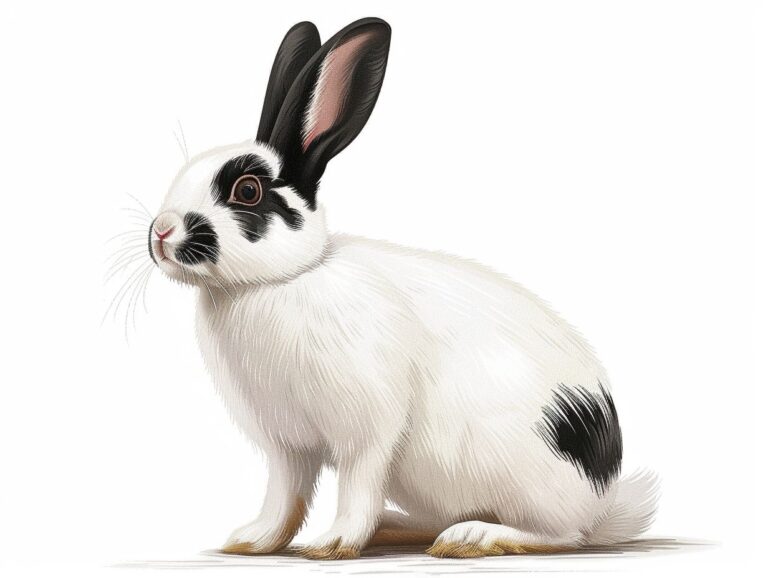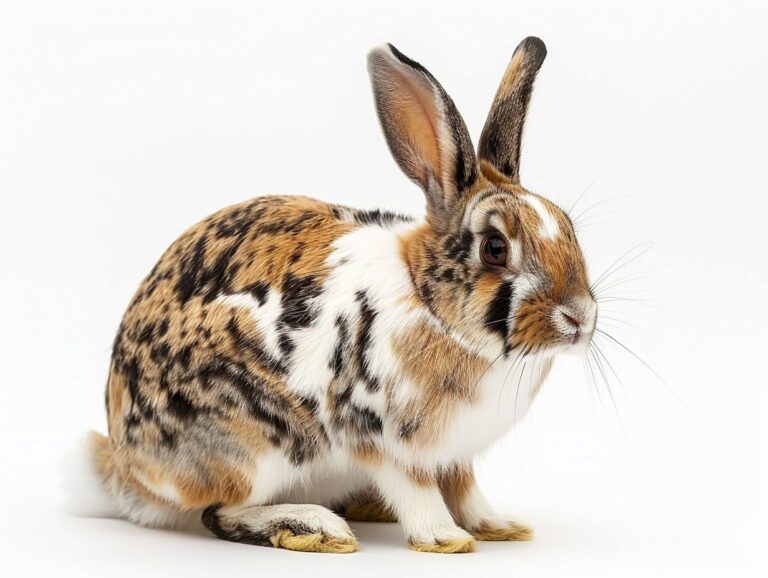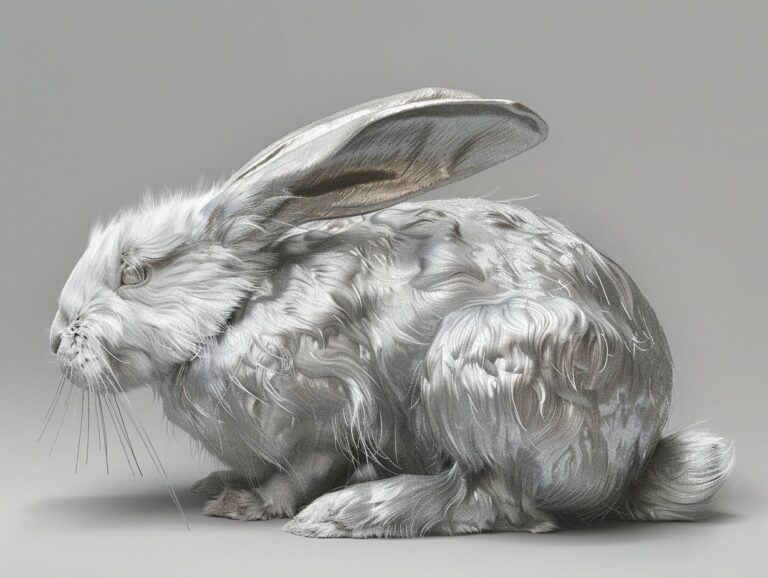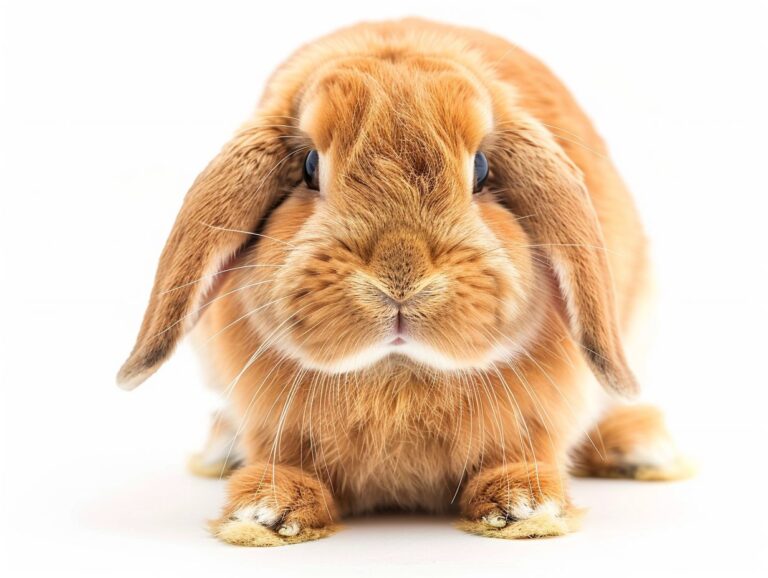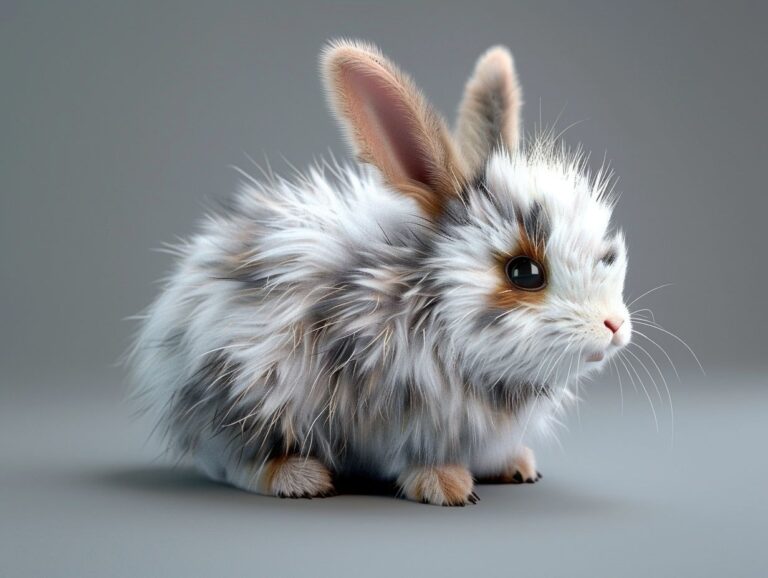Palomino Rabbit Breed: Characteristics, Care, History, and Breeding Practices
The Palomino rabbit breed is a fascinating and unique variety that has captured the hearts of many rabbit enthusiasts. In this article, we will explore the rich history of the Palomino rabbit breed, including its origin and the breeds used to create it.
We will also delve into the characteristics of these beautiful rabbits, from their physical appearance to their temperament and care requirements. Discover valuable insights on how to properly care for a Palomino rabbit, including feeding, grooming, and exercise tips.
For those interested in breeding Palomino rabbits, we will discuss the best breeding practices and how to care for pregnant rabbits and their kits. Join us as we uncover the world of the American rabbit breed!
Key Takeaways:
The History of the Palomino Rabbit Breed
The Palomino rabbit breed has a rich history that dates back to its establishment by Mark Youngs in Washington. It is a breed known for its unique golden color and lynx-like coat, recognized by the American Rabbit Breeders Association (ARBA).
Mark Youngs, a devoted rabbit breeder, developed this breed in the 1950s by crossing Himalayan, New Zealand Whites, and Chinchilla breeds. His goal was to create a rabbit with a distinct color and characteristics, resembling that of the Palomino horse. Through selective breeding and careful genetic manipulation, Youngs succeeded in achieving the desired golden hue, which eventually led to the breed’s official recognition by the ARBA in 1952.
How Did the Palomino Rabbit Breed Originate?
The Palomino rabbit breed originated from the efforts of Mark Youngs in Washington. Mark Youngs sought to create a rabbit breed with a unique golden coloration and lynx-like coat, leading to the establishment of the Palomino rabbit breed recognised by the American Rabbit Breeders Association (ARBA).
Mark Youngs, a dedicated breeder and enthusiast, meticulously selected rabbits with the desired characteristics to develop his vision of the Palomino breed. Through careful selection and controlled breeding practices, he was able to refine the breed’s features, including its distinctive coat and vibrant color.
His dedication eventually paid off, as the Palomino rabbit breed gained widespread recognition within the rabbit-breeding community. The breed’s unique appearance and temperament quickly caught the attention of enthusiasts, leading to its formal acknowledgment by ARBA as a distinct breed with set standards.
What Breeds Were Used to Create the Palomino Rabbit Breed?
The creation of the Palomino rabbit breed involved strategic crossbreeding with breeds like American Beige and American Sable.
American Beige rabbits, known for their light beige fur color, brought the soft, creamy undertones that are characteristic of the Palomino breed’s coat. Their genetics played a vital role in establishing the base hue for the Palomino’s iconic golden coloring. On the other hand, American Sable rabbits, with their striking dark sepia coat and gentle demeanor, influenced the Palomino’s temperament, contributing to the breed’s docile nature and friendly disposition.
Characteristics of the Palomino Rabbit Breed
The Palomino rabbit breed is distinguished by its golden color and lynx-like coat, reflecting the breed’s history and breeding standards. In addition, Palomino rabbits are known for their gentle temperament and versatility as both show rabbits and meat rabbits.
Palomino rabbits typically have a striking golden hue that varies from light sand to deep amber, giving them a distinctive appearance that stands out in a rabbitry.
Their semi-arched body type, medium-long fur, and soft texture of their coat contribute to the charm of the breed, making them popular choices for exhibition purposes. If you are interested in learning more about the Californian rabbit breed, continue reading.
In terms of temperament, Palomino rabbits are described as calm, friendly, and social animals, which makes them easy to handle and interact with, ideal for novice rabbit owners.
Physical Appearance

The Palomino rabbit’s physical appearance is characterized by its golden color and lynx-like coat, which gives the breed a distinctive and appealing look. These rabbits have a medium build and a sleek appearance that highlights their unique coloration.
This breed typically has a coat that is soft and silky to the touch, adding to its charm and elegance. The golden hue of their fur is often described as shining like polished gold under the sunlight, setting them apart from other rabbit breeds. Palomino rabbits also boast striking dark points on their ears, feet, and tail, enhancing the contrast with their main color. Their eyes are bright and expressive, contributing to their overall captivating appearance.
Temperament and Personality
Palomino rabbits are known for their gentle temperament and friendly personality, making them great companions for families. Their docile nature and social behavior contribute to their suitability as pets or show rabbits.
Palomino rabbits tend to be very friendly and affectionate, often forming strong bonds with their human companions. Their adaptability allows them to thrive in various living situations, whether in an indoor hutch or a spacious outdoor enclosure.
- In terms of training, Palomino rabbits are relatively easy to litter train, making them low-maintenance pets.
- These rabbits enjoy social interactions and thrive in a family environment, often enjoying being gently petted and cuddled.
- Due to their calm demeanor, they are great around children, adding to their familial compatibility.
Special Care Requirements
Palomino rabbits have specific care requirements that include regular grooming to maintain their lynx-like coat and a balanced diet to support their overall health. Monitoring their exercise and providing a suitable hutch are essential for their well-being.
A crucial aspect of caring for Palomino rabbits is their grooming routine, which involves brushing their soft fur regularly to prevent matting and reduce shedding. This not only keeps their coat in top condition but also helps in preventing skin issues.
In terms of their diet, fiber is key for their digestive health; ensure they have a diet rich in hay and fresh vegetables while limiting sugary treats or pellets. Learn more about pet care for large breeds.
Regular veterinary check-ups are vital to detect any health issues early, especially common ones like dental problems or gastrointestinal stasis.
How to Care for a Palomino Rabbit
Caring for a Palomino rabbit involves regular grooming to maintain their distinctive coat, providing a balanced diet rich in nutrients, ensuring proper exercise for their well-being, and setting up a suitable hutch that meets their space and safety requirements.
Grooming routines for Palomino rabbits should include brushing their beautiful fur at least once a week to prevent matting and decrease shedding. Check their nails regularly and trim them if needed to avoid overgrowth. A balanced diet for these rabbits consists of high-quality hay, fresh vegetables, and a limited amount of pellets. Encourage exercise by allowing them supervised playtime outside their hutch. Set up their hutch with a cozy bedding area, hiding spots, and secure fencing to ensure their safety and comfort.
Feeding and Nutrition
A well-balanced diet is crucial for Palomino rabbits, with a focus on high-quality hay, fresh vegetables, and commercial rabbit pellets such as Kaytee Food. Proper nutrition supports their overall health and ensures optimal growth and development.
High-quality hay forms the basis of a Palomino rabbit’s diet, providing essential fiber that aids in digestion. Fresh vegetables, such as leafy greens, carrots, and bell peppers, introduce vitamins and minerals crucial for their well-being. Supplementing with commercial rabbit pellets like Kaytee Food can help ensure they receive all necessary nutrients. It’s important to monitor portion sizes to prevent obesity and related health issues. Water should always be available to maintain hydration. Balancing these food options leads to a healthy, happy Palomino rabbit.
Grooming and Hygiene

Palomino rabbits, known for their beautiful and silky fur, require specific care to keep their coat in top condition. To maintain their lynx-like appearance, it is recommended to use a slicker brush to gently brush their fur regularly, ensuring that no tangles or mats develop.
Inspecting their fur for any signs of mites is crucial to prevent skin irritations and infections. Trimming the rabbit’s nails is another key aspect of grooming to avoid overgrowth, which can lead to discomfort and even health issues.
Grooming Palomino rabbits can present challenges, such as their sensitive skin that may react to harsh grooming products. It is important to use rabbit-safe grooming tools and products to prevent any adverse reactions.
Exercise and Enrichment
Palomino rabbits benefit from regular exercise and enrichment activities to keep them mentally stimulated and physically active. Providing opportunities for exploration, toys for play, and social interaction can enhance their overall well-being and prevent behavioral issues.
When designing an enriching environment for Palomino rabbits, consider incorporating activities like agility courses or obstacle courses to encourage movement and exercise. These can help them develop coordination and satisfy their natural curiosity. Introducing puzzle feeders or hiding treats around their enclosure can stimulate their minds and provide mental challenges. Rotating toys and rearranging their living space frequently can prevent boredom and encourage exploration.
Breeding Practices for the Palomino Rabbit Breed
Breeding Palomino rabbits requires careful planning and adherence to breeding standards set by organizations like ARBA.
The breed’s youth division plays a significant role in promoting responsible breeding practices and maintaining breed standards. Palomino rabbits are known for their distinct golden coat color, which is governed by specific genetic combinations. To ensure the purity and quality of the breed, breeders must pay attention to proper mating selection and genetic diversity.
Following the guidelines provided by the ARBA helps breeders in producing healthy and genetically diverse offspring. The involvement of the youth division brings fresh perspectives and enthusiasm to the breeding process, leading to innovative approaches and increased interest in Palomino rabbit breeding.
When is the Best Time to Breed Palomino Rabbits?
The best time to breed Palomino rabbits is typically in the spring or early summer when the rabbits are in optimal breeding condition. It is essential to consider factors like age, health, and environmental conditions when planning the breeding process.
Choosing the right breeding pairs is crucial for ensuring healthy and genetically diverse offspring. When selecting rabbits for breeding, look for individuals with strong physical attributes, good temperament, and no history of hereditary health issues. Pairing rabbits that complement each other’s strengths can enhance the overall quality of the litter.
Monitoring breeding outcomes involves observing mating behavior, tracking gestation periods, and ensuring proper nesting conditions for pregnant does. Providing a comfortable and stress-free environment during the mating and pregnancy stages can significantly impact the success of the breeding process.
What Are the Recommended Breeding Methods for Palomino Rabbits?
Recommended breeding methods for Palomino rabbits include focusing on genetics, selecting heritage breeds, and following established breeding standards. Understanding lineage, genetic traits, and breed characteristics is crucial for maintaining the breed’s standards and health.
Genetic diversity plays a vital role in breeding Palomino rabbits, as it helps in reducing the risk of genetic disorders and ensures overall robustness within the breed. Breeders must have clear breeding goals, whether it’s enhancing specific traits, such as coat color or body shape, or preserving the breed’s unique characteristics. Responsible breeding practices involve proper documentation of pedigree, health screenings, and ethical treatment of the rabbits.
How to Care for Pregnant Palomino Rabbits and Their Kits

Pregnant Palomino rabbits should be fed a balanced diet rich in fiber, protein, and essential nutrients to support their developing young. It is crucial to provide fresh hay, vegetables, and a small amount of pellets daily.
When preparing the nesting area, ensure it is secluded, quiet, and lined with soft materials like hay or shredded paper. This cozy space will help the doe feel secure when giving birth and caring for her kits.
Once the kits are born, monitor their growth and behavior closely. Keep them warm, clean, and well-fed, as the first few weeks are crucial for their survival and health.
Frequently Asked Questions
What is the Palomino Rabbit Breed?
The Palomino Rabbit Breed is a breed of domestic rabbit known for its striking golden or sandy-colored coat. They are a medium-sized breed, weighing between 8-10 pounds, and can come in a variety of shades ranging from light to dark.
What are the characteristics of the Palomino Rabbit Breed?
The Palomino Rabbit Breed is known for its distinct coat color, as well as its large and sturdy body. They have a broad head and long ears, with a friendly and docile temperament. They are also known for their high fertility rates, making them a popular choice for breeding.
What is the history of the Palomino Rabbit Breed?
The Palomino Rabbit Breed was developed in the 20th century in America by breeding various breeds such as Chinchilla, Checkered Giant, and English Spot. The goal was to create a rabbit with a golden-colored coat similar to the Palomino horse. The breed was first recognized by the American Rabbit Breeders Association in 1952.
How should I care for a Palomino Rabbit?
Palomino Rabbits require a balanced diet of hay, fresh vegetables, and commercial rabbit pellets. They also need regular grooming to keep their coat in good condition. It is important to provide them with a spacious living area and plenty of opportunities to exercise.
Can Palomino Rabbits be used for breeding?
Yes, Palomino Rabbits are often used for breeding due to their high fertility rates and ease of reproduction. However, it is important to carefully select breeding pairs to ensure the health and quality of the offspring.
What are some common breeding practices for Palomino Rabbits?
When breeding Palomino Rabbits, it is important to choose healthy and genetically diverse pairs. Breeders also often use artificial insemination to increase the chances of successful breeding. Proper care and nutrition during pregnancy is crucial for the health of both the mother and the kits.


